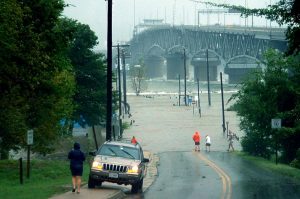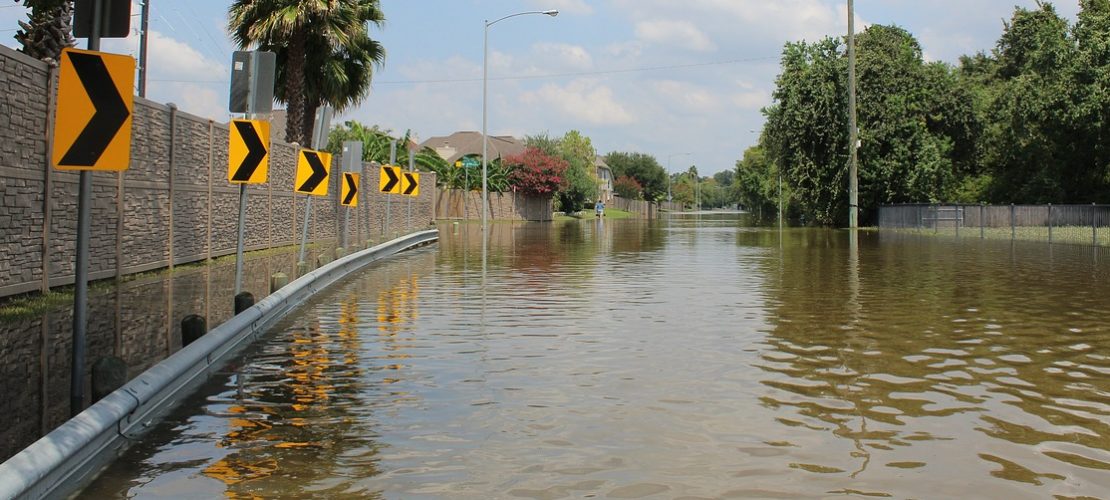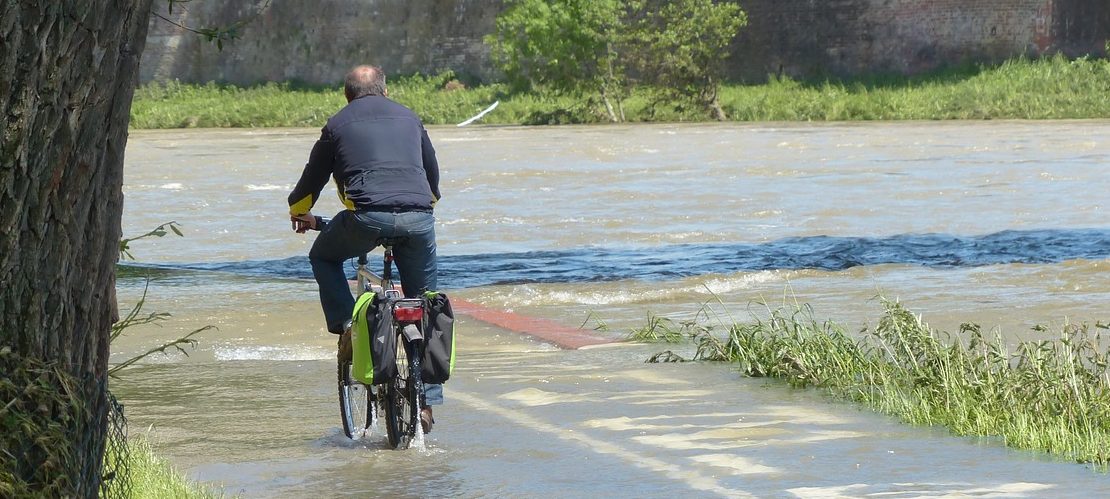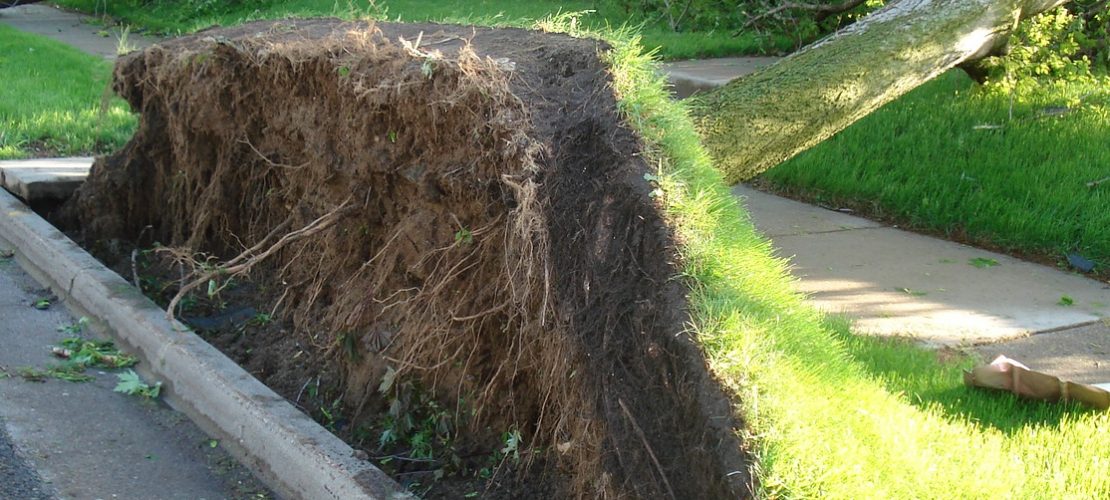Your home is your castle. It protects you and your family, as well as your possessions, from the elements. For many, the home is a major financial investment. Yet natural hazards such as coastal storms, floods, high winds, and tornadoes can threaten the inhabitants and contents of your home. When a natural disaster occurs, the results can be devastating. This handbook was created to help you prepare for natural hazards so that risks to family and property may be reduced. While it is never possible to eliminate all damage from a natural disaster, you as a homeowner can take action and implement many small and cost-effective steps that could significantly lower your risk. Mother Nature can be intense. Your family and home deserve the protection that only you can provide.
This handbook is divided into several sections. This Introduction section presents the purpose and layout of the handbook and includes a discussion of common myths that may have prevented you from taking action in the past. There is also a summary of the content of this handbook in the form of several things you can do to prepare.
The Overview of the Natural Hazards section provides basic information on coastal storms, flooding, and other hazards that will allow you to make an educated decision about the steps to take to protect your family and property.
Protecting Yourself and Your Family discusses in detail how to protect yourself and your family. It includes recommendations for essential emergency supplies, evacuation kits, and evacuation planning and evacuation procedures and important information that emergency management agencies want you to know even before a warning is issued.
Protecting Your Property covers how you can protect your property from wind and water hazards.
The Insurance section presents general insurance information and resources to aid in recovery if storm damage occurs.
Coastal Construction and Beach Management address homeowners on the coast who are preparing to build or renovate their home on the beach.
Climate Change provides an overview of climate change in and around Virginia and how climate change may exacerbate the impacts of natural hazards in the future.
This handbook will be updated on an as-needed basis as new information becomes available and feedback from the public is obtained. For general emergency information, you can contact your state or county emergency management agencies at the addresses and phone numbers provided (see Get Connected).

On September 18, 2003, Hurricane Isabel entered Virginia, beginning what would become the costliest disaster in the history of the Commonwealth [1]. Though Isabel was weakened from a category 5 hurricane at sea to a category 1 by the time it entered Virginia, strong winds affected 99 counties and cities in the state, and 1.8 million people were left without power. Storm surges from Isabel peaked at around 9 feet in Richmond at the James River, and places such as Sherando, Virginia experienced 20.2 inches of rainfall. The National Weather Service attributes 10 deaths directly to the storm, and another 26 as indirectly related. Damage to the state of Virginia totaled $1.85 million [2].
The coast of Virginia experienced wind gusts from 50 mph to 70 mph, while storm surges reached unofficial estimates of almost 11 feet and heavy waves resulted in beach erosion and overwash [3, 4, 5]. The historic Harrison’s Pier in the Ocean View area of Norfolk was completely destroyed, and the 15th Street fishing pier in Virginia Beach was significantly damaged [6]. Northern Virginia experienced storm damage as well; in Fairfax County, the storm surge washed out 160 homes and 60 condominiums, with 2000 units reporting flood damage [7]. Flooding and downed trees destroyed two houses and damaged 192 homes in Arlington County [8].

However, the storm had effects on much more of Virginia than the coast. Storm surges along the James River wreaked havoc on homes in Claremont, Burwells Bay, and Henrico County, where a resident drowned after crashing into a flooded creek [9]. A motorist on Interstate 95 in Richmond died when he hydroplaned and crashed his car [10]. Monetary damage in the central region totaled about $3 million [11]. Intense rainfall in Augusta County, combined with wind gusts of around 60 mph, resulted in downed trees and power lines [12]. Rainfall led to both river flooding and flash flooding; four emergency spillways to dams flooded [13]. Water flowing down the Black Creek washed out the bridge, along with other sections of asphalt along State Route 608, and the South River at Waynesboro destroyed four bridges [14]. Emergency management personnel evacuated about 300 people from rapid flooding, 21 by boat [15]. The photo to the left, taken September 18, 2003, courtesy of The Virginia Institute of Marine Sciences, shows storm-surge flooding from Hurricane Isabel at Gloucester Point on the York River.
Though there was some warning before Hurricane Isabel struck Virginia, it is impossible to predict the exact path, strength, and nature of natural hazards. Coastal homeowners often think they are adequately prepared, and inland homeowners assume that hurricanes will have little or no effect on their property. However, natural hazards are volatile and unpredictable. With the information provided in this manual, homeowners can equip themselves to face natural disasters confidently with knowledge and preparation.
Top 10 Myths About Natural Hazards Preparedness
“A natural hazard won’t affect me.”
Scientists agree that it is not a matter of if the next major coastal storm will occur, but when. Over the past 10 years, the Norfolk area has experienced 26 instances of coastal flood, flash flood, flood, high surf, storm surge/tide, high wind, tropical depression/storm, or hurricane [16]. From the small time period from January 2014 to January 2016, Norfolk experienced a coast flood, a flash flood, and a tropical storm. Hurricane Joaquin, predicted to reach Virginia in October of 2015, luckily resulted only in heavy rainfall in the region, though it wreaked havoc in the Bahamas. In that instance, coastal Virginia was fortunate, yet these near misses are rare; chances are that you will experience impacts from a major natural hazard event in your lifetime.
“ I survived hurricanes Isabel and Sandy, so I am sufficiently prepared.”
Many people have the impression that if they survived past hurricanes, they do not need to prepare any more than they did previously. Although these storms resulted in widespread damage along the East Coast, their impacts to Virginia could have been much more severe. Had they tracked slightly differently or made landfall at different locations along the coastline, significantly greater effects would have been experienced in Virginia, including higher winds and more severe flooding.
“If a disaster occurs, it won’t be that bad.”
When a coastal storm or flood event occurs, the damage can be devastating. During Hurricane Gaston (2004), described as only a minimal hurricane, over a foot of rain was dropped in Richmond, over ten inches in numerous locations in the middle of the state, and 11.7 inches in Hanover [17, 18]. In turn, 19 tornadoes were confirmed state wide [19]. Nine people died, and damage from flooding in Richmond alone totaled over $20 million [20].
“I don’t live near the coast, so I am safe.”
In fact, the vast majority of damage or destruction during recent tropical systems was caused by inland flooding associated with extreme rainfall. In Virginia, more than 260,000 people are living in areas at elevated risk of inland flooding [21]. Hurricanes are responsible for three of the top 10 worst river flooding events in the state of Virginia, caused by Dianne (1955), Camille (1969), and Fran (1996) [22]. Powerful thunderstorm and wind events such as tornadoes can cause widespread damage in all areas of Virginia. Therefore, all homeowners should prepare- not just those who live along the coast.
“Even if I install hurricane clips, my home could still be damaged.”
Even though someone may wear a seat belt, shoulder belt, and have an airbag, there is no guarantee that person won’t be injured in a major auto accident. Yet most people recognize the importance of these safety devices in reducing risk and use them. Likewise, the measures discussed in this handbook could significantly reduce risk, although there are no guarantees there will be no damage.
Strengthening your house can protect you from coastal storms, floods, and tornadoes. Ultimately, strengthening your house should be considered a home improvement that adds value to your house and is worth the effort, even without external incentives. The time and money spent to prepare your house are a very small fraction of the resources that may be needed if you fail to minimize damage when a natural hazard strikes. In addition, by strengthening your house you protect your neighbors as well as yourself. A house that falls apart during a hurricane will create debris that can damage adjacent properties.
“If my home or property is damaged by a natural hazard event, government programs will provide assistance.”
After major disasters, many homeowners find that the government may not repair their damaged houses or even provide adequate compensation for property damage. Government compensation evaluations are conducted after a disaster strikes and are based on the amount of damage that occurs on a county-wide basis. It is up to you to plan properly, strengthen your house, and have the appropriate financial protections in place such as insurance, if it is available. After a natural disaster occurs, the government may also be overwhelmed by the number of people in need and help may not arrive quickly.
“My house survived hurricanes Isabel and Sandy, so I do not need to retrofit for hurricanes.”
When another massive natural disaster occurs, the resulting damage could be much greater. Neither Isabel nor Sandy were wind-design events—that is, wind speeds were well below coastal building code design-level wind speeds [23]. Homeowners in coastal Virginia should consider retrofits that provide window protection and a continuous load path connection, which will help protect homes against both hurricanes and tornadoes. Additional simple measures are also possible.
“If a natural hazard event occurs, there is nothing I can do.”
Fortunately, there are many small steps you can take to significantly reduce the risk of damage to life and property. While it is not possible to eliminate all risk or damage, taking steps to plan and prepare can make a major difference and determine whether your house survives and receives minor or no damage. Thus, the information in this handbook covers two major parts for preparation: (1) protecting yourself and your family and (2) protecting your property.
“Strengthening my house is too expensive and not worth the effort.”
There are several relatively inexpensive ways to strengthen your house:
- Hurricane clips or window coverings can range from a couple hundred dollars to a few thousand dollars. This alone offers significant protection.
- For minimal costs, the roof structure (trusses and rafters) for many houses can be strengthened with bracing.
- Strengthening your roof can be expensive if done by itself. However, if it is done when you replace your roof at the end of its normal life, the incremental cost is reasonable.
- Foundation upgrades can be expensive, but considering your house is probably your major investment, it could be worth the immediate cost.
“My mobile home will be tied down and braced, so it is a safe place to ride out a storm.”
A mobile home is NEVER a safe place to weather a hurricane or tornado. Anyone living in a mobile home must evacuate, no matter what category of hurricane it is. According to the National Hurricane Center, no mobile or manufactured home – no matter how new it is – can be a safe shelter from hurricane-force winds. While never a safe place to ride out a storm, tie-downs and straps can prevent your mobile home from coming loose and causing damage.
You also help the emergency efforts of the local, state, and federal governments by being able to assist other people instead of requiring help yourself. By preparing and strengthening your house, you are more likely to “weather the storm” and be better able to take care of family members, including the elderly, those with special needs, and pets. However, keep in mind that even if your fortified house is capable of withstanding a storm, you should still evacuate if the neighborhood you live in will become inaccessible due to deep floodwaters. Always follow evacuation instructions issued by your local/state emergency management officials.
5 Things You Can Do to Prepare for a Natural Disaster
Compile an evacuation kit
If your evacuation plans include using a public shelter for a coastal storm or flood, you will need an evacuation kit that contains clothing, medications, personal hygiene products, and other items such as bedding for five to seven days. Water and food are provided at shelters, but if a special diet is required, you should bring these foods with you. The kit should already be assembled and checked before hurricane season. If the kit will be used during evacuation for other hazards, three days of supplies may suffice. Don’t forget to plan for your pet and prepare a pet evacuation kit. Visit Learn More for more information about preparing evacuation kits.
Create an evacuation plan for both a flood and a coastal storm
They are different. For a tropical storm or strong northeaster, your plan may include sheltering in a structurally fortified house if it is outside the highrisk flood zone or any evacuation zone. If you can’t use your house, use a suitable alternative structure (a friend’s or relative’s house) or a shelter that is officially open (listen to local radio and television or go to redcross.org and click on “find a shelter”, or Get Connected to your community).
For a flood, evacuate to high ground outside the evacuation zone if you are instructed by emergency management officials to do so. In any event, do not drive through high water—“turn around, don’t drown.” Discuss and practice drills of your evacuation plan with your family each year. Know your property and take appropriate action Look at where you are located. If the land has flooded in the past or is shown to be in a special flood hazard area on Federal Emergency Management Agency (FEMA) flood maps, you should consider flood insurance. If trees overhang your house, you should consider trimming or cutting branches that may damage your house in a storm. If your property is near a ridge, open land, or water, it may be especially susceptible to wind damage during a storm or hurricane (see Protecting Your Property).
Know your house and take appropriate action
When was your house built? Does it have connectors that tie the roof to the walls or the walls to the foundation? When will you need to replace the roof? Strengthen your house. A recently built house should have hurricane clips to tie the roof to walls and should also have strong connectors from the walls to the foundation. If you have an older home, you can retrofit at a reasonable cost. All households should consider the many options now available to protect your windows, garage, and doors. You can also strengthen your roof when it is time to replace it. The steps a homeowner can take will vary with each house, but for the majority of homeowners, there are a few steps that can make a significant difference (see Protecting Your Property).
Consider efforts to strengthen your house as an important home improvement project. Most projects are not that expensive. It is a great investment to strengthen your house and provide more protection to your family.
Seek the assistance of a qualified, licensed architect, structural engineer, or contractor
This handbook covers work that you may be able to do yourself. If you cannot do the work, seek qualified assistance through trusted references from friends and family, the Virginia Society of Professional Engineers, or contractors’ associations [24]. Even if you do the work yourself, it is always best to seek professional advice for initial guidance since every house is a little different (see Protecting Your Property). If you are located in a high-wind region, you should seek professional advice for how to secure your home from high wind damage. Remember to obtain all required local, county, and state permits and approvals before any work is initiated.
Don’t gamble with your house!
Obtain adequate insurance if you are in a flood-prone area (see Insurance). Remember that flood insurance coverage does not take effect until 30 days after purchase. Contact your insurance company or agent and verify that coverage is in place before a disaster strikes. Coverage may vary among insurance companies, so communicate with your insurance agent specifically about your policy and what is covered. Remember that reducing the risk to your house with window protection, hurricane clips, and wall-to-foundation tie-downs may provide significant discounts to your insurance premium. Renters should remember that they should purchase their own renter’s insurance. The Virginia State Corporation Commission Bureau of Insurance suggests that you prepare for severe weather disasters by creating a home inventory [25]. A proper home inventory will create a record of what you own and what it is worth (Visit Useful Tools).
- The CWS Response (PDF). Church World Service, 2003). Archived from the original (PDF) on February 3, 2007. Accessed February 2007.
- Virginia Hurricane History. National Weather Service, 2006. Accessed March 2013.
- Preliminary Post-Storm Report on Hurricane Isabel. Wakefield, Virginia National Weather Service, 2003. Accessed February 2007.
- Landscape Modifications by Hurricane Isabel on Fisherman Island in Virginia (PDF). T.R. Allen and G.F. Oertel, 2005, Chesapeake Research Consortium. Accessed February 2007.
- Hurricane Isabel Tropical Cyclone Report. Jack Beven and Hugh Cobb, 2003, National Hurricane Center. Accessed February 2007.
- Preliminary Post-Storm Report on Hurricane Isabel. Wakefield, Virginia National Weather Service, 2003. Accessed February 2007.
- Event Report for Virginia. National Climatic Data Center, 2003. Archived from the original on May 11, 2008. Accessed February 2007.
- Event Report for Virginia. National Climatic Data Center, 2003. Archived from the original on May 11, 2008. Accessed February 2007.
- Hurricane Isabel Service Assessment (PDF). National Oceanic and Atmospheric Administration, 2004. Accessed February 2007.
- 1.4 million in dark after Isabel hits. Peter Bacque and A.J. Hostetler, 2003, Richmond Times-Dispatch. Accessed March 2007.
- Event Report for Southwest Virginia. National Climatic Data Center, 2003. Archived from the original on May 11, 2008. Accessed February 2007.
- Event Report for Shenandoah Valley (2). National Climatic Data Center, 2003. Archived from the original on May 11, 2008. Accessed March 2007.
- Event Report for Shenandoah Valley. National Climatic Data Center, 2003. Archived from the original on May 11, 2008. Accessed March 2007.
- Event Report for Shenandoah Valley. National Climatic Data Center, 2003. Archived from the original on May 11, 2008. Accessed March 2007.
- Event Report for Shenandoah Valley. National Climatic Data Center, 2003. Archived from the original on May 11, 2008. Accessed March 2007.
- Storm Events Database. National Centers for Environmental Information, 2016, NOAA. Accessed July 2016.
- Hurricane Gaston rainfall summary. David Roth, 2004, Hydrometeorological Prediction Center. Accessed May 2008.
- Hurricane Gaston Tropical Cyclone Report (PDF). James L. Franklin, Daniel P. Brown and Colin McAdie, 2004, National Hurricane Center. Accessed April 2008.
- August 30, 2004 event reports. Storm Prediction Center, 2004, NOAA. Accessed May 2008.
- Tropical Storm Gaston Event Report. National Climatic Data Center, 2004. Accessed May 2008.
- States at Risk: America’s Preparedness Report Card. Climate Central and ICF International. Accessed July 2016.
- Inland Flooding Does Pose Threat to Area During Hurricane Season. Aubrey Urbanowicz, 2013, WHSV. Accessed July 2016.
- Hurricane Sandy in New Jersey and New York: Building Performance Observations, Recommendations, and 0Technical Guidance. Mitigation Assessment Team, 2013, FEMA. Accessed July 2016.
- Virginia Society of Professional Engineers (2016). Accessed July 2016.
- Homeowners Insurance: Consumer’s Guide. State Corporation Commission Bureau of Insurance, 2011, Commonwealth of Virginia. Accessed July 2016.



